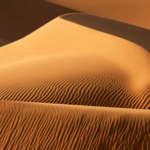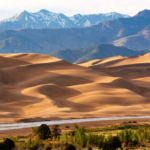What is an Erosion Control Blanket (ECB)? An erosion control blanket (ECB), also known as the erosion control mat or fabric, is a material made to prevent soil erosion on slope surfaces, water channel banks, or other erosion-prone land surfaces. Natural and synthetic fibers are used to make these blankets. These mates are designed to provide temporary protection to the soil until vegetation can grow and take over the responsibility of erosion control.
The erosion control blanket acts as a barrier against water runoff, wind, and other erosive agents, thus helping to stabilize the soil and protect it from being washed away. The blanket is usually installed on bare soil surfaces in areas where some human activities (construction, road cuttings), landscaping, or other activities have disrupted the natural vegetation cover. The absence of a vegetation cover weakens the internal adhesive quality and integrity of the soil.
There are different types of erosion control blankets, and they may vary in material, thickness, and design. Some blankets are designed to degrade over time, allowing plants to take root and provide long-term erosion control. Others may be more permanent and provide a durable layer of protection.
Installation methods may involve securing the erosion control blanket to the soil surface using staples, nails stakes, or other means. The choice of erosion control blanket depends on factors such as the slope gradient, climate, and the intended duration of erosion control required.
Overall, erosion control blankets play an important role in preserving soil integrity, preventing sedimentation in water bodies, and promoting sustainable land management practices.
What is an Erosion Control Blanket made of?
An Erosion Control Blanket (ECB), also known as an erosion control mat or fabric, is typically made from natural or synthetic materials designed to prevent soil erosion. The specific composition can vary depending on the manufacturer and the intended application, but some common materials include:
- Natural fibers:
- Coconut fibers (coir): Erosion control blankets often use coconut fibers due to their biodegradability and ability to provide effective erosion control. Coir blankets are environmentally friendly and break down over time as vegetation establishes.
- Synthetic materials:
- Polypropylene: Some erosion control blankets are made from synthetic materials like polypropylene. These blankets are durable and provide effective erosion control. However, they may not be as environmentally friendly as natural fiber alternatives.
- Biodegradable materials:
- Straw: Straw blankets are commonly used for erosion control. They are biodegradable and can be effective in preventing soil erosion until vegetation takes root.
- Blended materials:
- Composite blends: Some erosion control blankets are made from a combination of natural and synthetic materials, offering a balance between durability and environmental considerations.
The primary purpose of an erosion control blanket is to stabilize the soil, protect it from water runoff, and promote the establishment of vegetation. The choice of material depends on factors such as the site conditions, the severity of erosion, and the desired environmental impact. It’s essential to follow manufacturer recommendations and specifications for installation and usage to ensure optimal erosion control effectiveness.



Leave a Reply